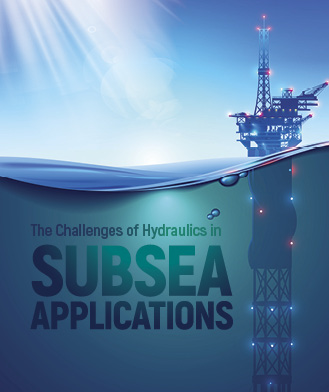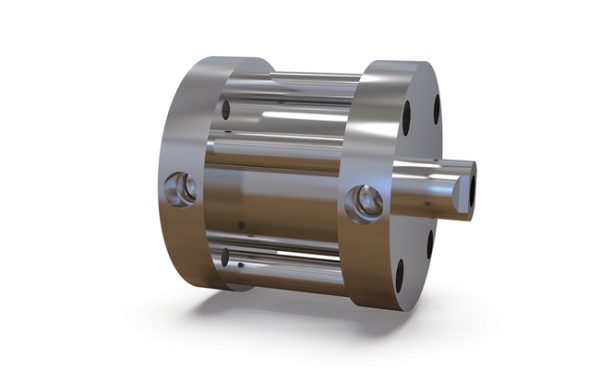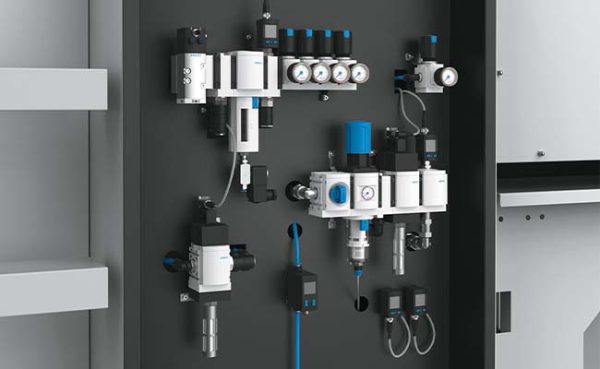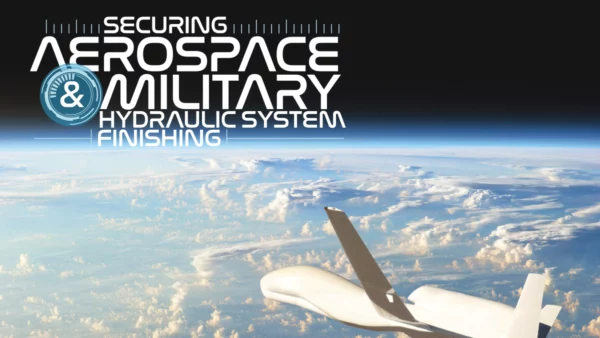The Challenges of Hydraulics in Subsea Applications
By Michael Degan, Editor
 As head of Subsea Automation Systems at Bosch Rexroth, Alexandre Orth is fascinated by the ocean.
As head of Subsea Automation Systems at Bosch Rexroth, Alexandre Orth is fascinated by the ocean.
“What fascinated me when I started in this field was: I learned that we know more about space than we do about the ocean depths. . . . The sea floor is as difficult for us as going to the moon.”
Orth should know. He designs undersea equipment for marine applications, equipment such as a new subsea valve actuator made to withstand the harsh conditions of the ocean floor with limited maintenance possibilities.
From an engineering standpoint, the challenges associated with subsea equipment are numerous, Orth said. Saltwater, which is very corrosive, is the first problem. Also, down to a depth of about 100 meters where the light reaches, crustaceans such as barnacles can grow in or on the equipment and cause problems. The distance of the equipment from the shore presents challenges. For example, oil and gas platforms are often situated far from the coast, often by 100 kilometers or more. It is difficult to bring equipment to them, and the logistics are complicated. Some operations can be up to 4000 meters deep with pressures more than 400 times that above the sea. Finally, if something is not working, it is very difficult to “go have a look.” Consequently, the operations must be remotely controlled. Undersea applications must rely completely on the automated systems.
“As a control and automation engineer, there is no better challenge than that,” Orth said.
But this is where the ruggedness and reliability of fluid power come in. Orth said hydraulics is uniquely suited to the environment and the conditions in which the undersea applications function.
“You have extremely heavy loads, and [with hydraulics] you have the advantage of power density. You can increase the hydraulic power and reduce the size of the equipment. When you think about transporting a machine hundreds of kilometers and laying it down on the seabed, you need a big crane [using hydraulics] to do that.
“Another advantage is that hydraulics can be integrated with the ambient pressure, so you can use sea pressure, and there’s no need to make a special housing to protect the hydraulic equipment from the high pressure. This reduces the size of the equipment. Normally digital electronics cannot withstand the high pressure; they are damaged by it. They need a special housing with thick walls to withstand the pressure. With hydraulics we don’t have this problem.”
In a typical hydraulic system, Orth explained, “there is a tank for the fluid, a pump with controls on top and an actuator. In our case, we open the tank and throw everything inside, and the only thing outside the tank is the actuator itself. So the hydraulic fluid is protecting the hydraulic equipment against the sea conditions. The whole system is swimming in the fluid, and this helps compensate for the high sea pressure.
“This tank is a little bit stronger than normal. We use a membrane that lets the seawater pressurize the hydraulic fluid. So the hydraulic fluid is always at least the same pressure as the sea pressure. But we like to have a little overpressure, so our tanks have an added spring on this membrane, increasing the internal pressure. The hydraulic fluid is always 1 or 2 bar above the seawater pressure. And we always have a positive overpressure on the sealing on the outside walls.
“The pump only needs to provide the relative pressure, not the absolute pressure.“
Getting projects to the ocean floor has its own problems. The machine is transported by ship, then laid down with special cranes and winches. Special control systems are needed, Orth said, because the sea floor is fixed, but the sea surface is moving. Hydraulic systems are also normally used to get the machine to the ocean floor, helping to compensate for the movement of waves. Otherwise you can damage the machine.
Hydraulic accumulators and high-speed hydraulic motors are applied for positioning compensation for the movement of waves. Operators conduct a controlled descent to protect the machine. A normal descent speed is five meters per second.
“The most critical times are at the beginning and the end,” Orth said. “The most control is needed when the machine is submerging below the surface, and then when it approaches the seabed.”
With the corrosive effects of saltwater, protecting the hydraulic system is key. The manufacturer could use a special type of stainless steel, but this drives up the cost. Instead, they use normal steel with a special coating that manages the corrosion.
“The coating is unique to the subsea environment,” Orth said. “Managing corrosion on the sea surface is more critical than on the sea floor. Cylinders working in splash zones are exposed to the air and the saltwater. Very deep in the water there is less oxygen, so it is even better. The only difficulty is lack of accessibility to change equipment easily, so you need a longer lifetime in the design of the equipment. That’s the challenge.”
Designers like Orth meet that challenge with the long-durability design of subsea equipment. In oil and gas applications, for example, the subsea actuator is designed for a life of 25 or 30 years with minimum maintenance. Another example of high-reliability design is application of a redundant drive system.
“With wind farms,” he said, “you can perform normal maintenance so there is no reason for redundant design.”
The control system is another challenging design step.
“The challenge with subsea systems is that everything is controlled topside. There’s a lot to be thought of up front because the normal trial-and-error approach is not possible.”
The designers face stringent requirements about reliability and safety.
“We tried industrial electric controls with very low power demand, [but] we decided to stay with automotive electric controls. We use smaller controls, [like those] that normally apply in your car. They are very small and robust controls. Very robust for the harsh environments.”
In designing systems and applications for deepwater projects, many of the problems are unique to the undersea environment. Engineers use environmentally friendly fluid in a closed-system design to protect the sea environment.
The challenge for the engineers, Orth said, “is to think about all this before the equipment is on the seabed. That’s what fascinates me as an automation control engineer but also as a hydraulic designer. I think it is a field where there are a lot of things to discover. We are just beginning. There will be a lot of fascinating technology coming from that.”
This article is based on the episode of the Fluid Power Forum podcast posted on Feb. 3, 2020. Fluid Power Forum, a bi-weekly podcast hosted by Eric Lanke, President/CEO of the National Fluid Power Association, features interesting people who are helping to move fluid power technology forward. Visit http://fluidpowerforward.libsyn.com for more information or to subscribe to the show.







